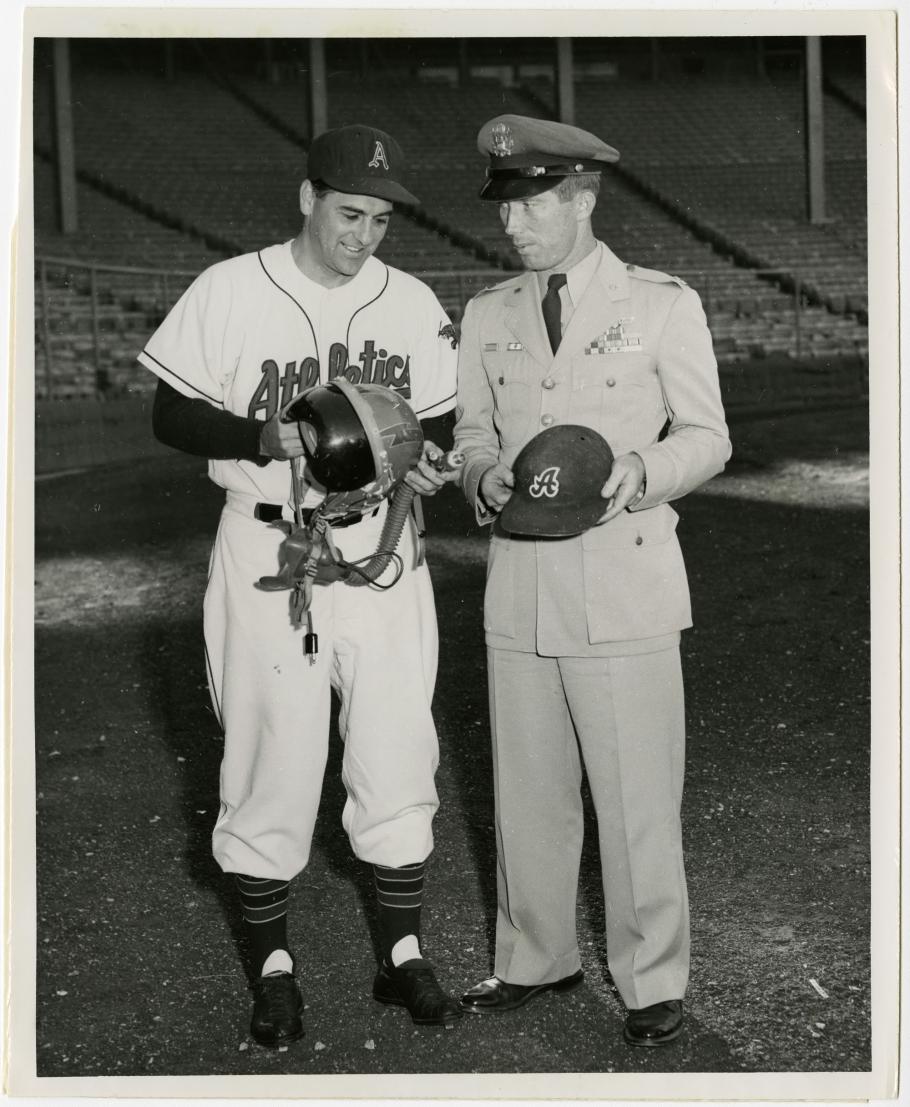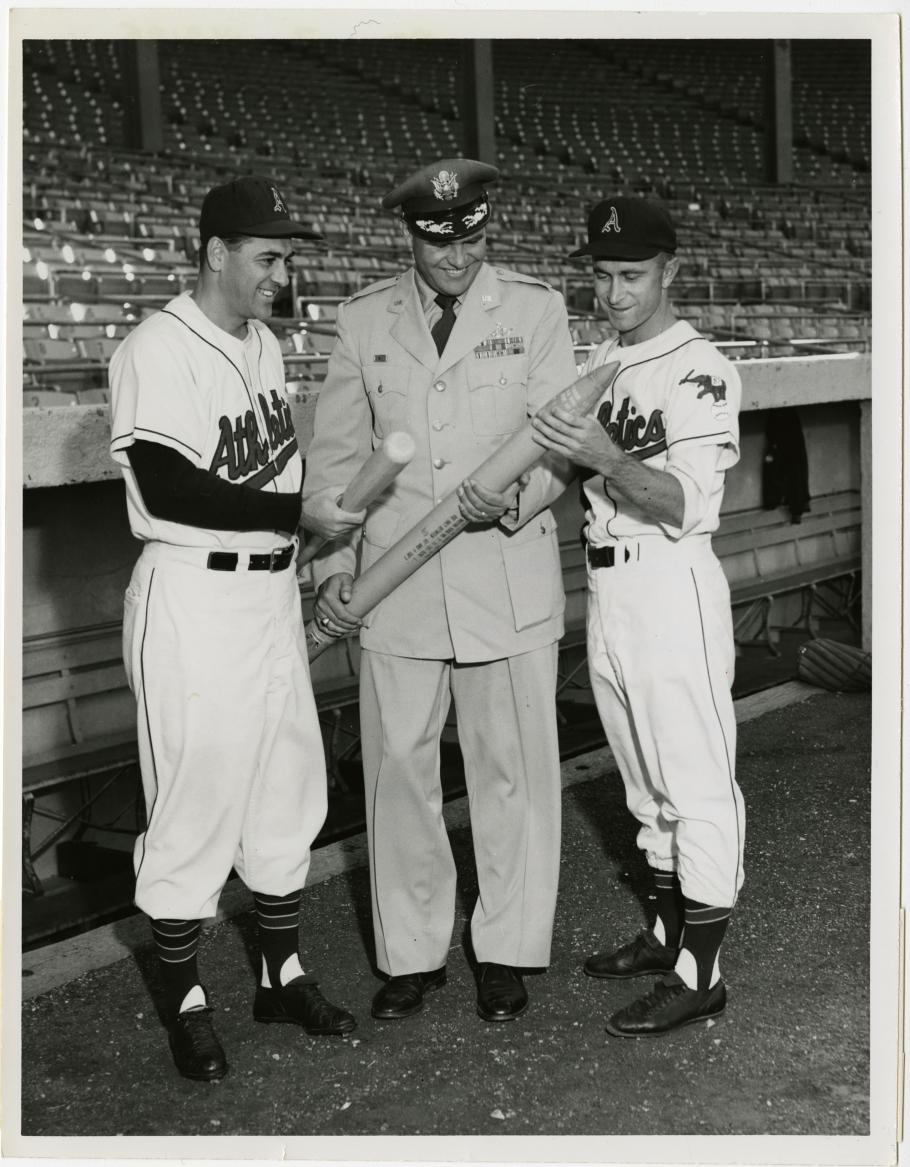After a long, cold winter on the East Coast, spring is finally here and a new baseball season is about to start! Many teams have military nights, in which they invite active duty men and women to the ballpark to honor their service and enjoy the game. In 1956, officers of the Central Air Defense Force, stationed at Grandview Air Force Base in Missouri, visited Municipal Stadium to meet with the Kansas City Athletics. While on the field, they compared the equipment and armament used in their respective professions.
“Heads up!” Lou Boudreau, management of the Kansas City Athletics, holds a jet pilot helmet, while Captain John P. Green examines a plastic helmet.
In 1956, a new National League rule made it mandatory to wear protective headgear when in the batter’s box. The helmet was either a plastic helmet or an insert placed in the baseball cap. The A’s played in the American League, where the rule was not adopted until 1958, but chances are several of their players wore protective headgear. Compared with the P-1B helmet worn by a jet’s crew (an earlier version, the P-1A, can be found in the Museum’s collection), 1950s batting helmets were probably quite insubstantial.
“Here I come to save the day!” Kansas City Athletics’ manager, Lou Boudreau (left), Colonel Malcolm A. Moore (center), and Athletics’ pitcher, Bobby Shantz (right) compare a major league baseball bat to a Mighty Mouse rocket.
The Mighty Mouse folding-fin rocket and the Major League baseball bat were physically very similar. The Mighty Mouse has a diameter of 2.75 inches, the maximum diameter that a baseball bat can be at its thickest part. The longest a baseball bat can be is 42 inches, the same length as the Mighty Mouse. Nicknamed after the cartoon hero, the small unguided rocket was powerful enough to take down a bomber when fired from an airplane, but was very inaccurate. Pitcher Bobby Shantz was a bit more accurate, earning AL MVP honors in 1952 and seven Rawlings Gold Gloves for fielding. A’s manager Lou Boudreau was used to facing mighty difficult odds. One of Boudreau’s best known managerial tactics was his implementation of the infield shift against Ted Williams (also often known as the Boudreau shift or Williams shift). Both Lou Boudreau and the Mighty Mouse went on to have long careers, though each was thrown a curve ball. Kansas City finished last in the American League in 1956; Boudreau was fired 104 games into the 1957 season. After one more season as manager with the Chicago Cubs, Boudreau served as the radio play-by-play voice for the Cubs for almost thirty years and was elected to the Baseball Hall of Fame in 1970. As more accurate guided missiles were built, the Mighty Mouse fell out of favor as an air-to-air weapon, but found new life as an air-to-ground weapon fired from a helicopter. Batter up!

